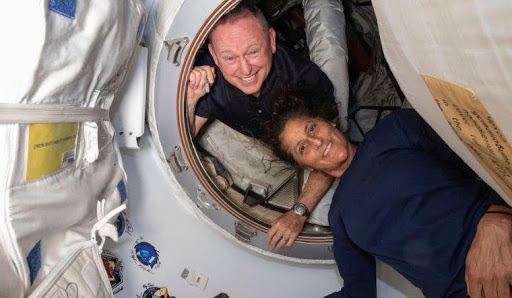The International Space Station (ISS) is a multinational collaborative project involving space agencies from the United States (NASA), Russia (Roscosmos), Europe (ESA), Japan (JAXA), and Canada (CSA). The ISS orbits the Earth at an average altitude of approximately 420 kilometers (260 miles) and serves as a microgravity and space environment research laboratory where scientific research is conducted in astrobiology, astronomy, meteorology, physics, and other fields.

Researchers from the Indian Institute of Technology-Madras and NASA’s Jet Propulsion Laboratory (JPL) are working together to research a ‘superbug’, a multidrug-resistant virus identified aboard the International Space Station (ISS). This discovery has raised ‘health worries’ among astronauts, including Sunita Williams, who is currently on board the ISS. The study of this disease could possibly have important applications on Earth.

Enterobacter bugandensis, a prevalent nosocomial pathogen, was found on ISS surfaces. Indian-origin Sunita Williams, 58, and Wilmore, 61, departed for their third space journey on Thursday, June 6. This momentous event marked the first flight to the International Space Station (ISS) with Boeing’s Starliner spacecraft. Williams pilots the flight test, while Wilmore is the mission commander. “The current study emphasises the critical need to investigate the pathogenic potential of microorganisms in space environments to safeguard astronaut health and mitigate the risks associated with opportunistic pathogens,” the news agency PTI reported an IIT-M announcement as saying.
Researchers undertook a comprehensive study to investigate the genetic, functional, and metabolic enhancements of multidrug-resistant bacteria, with a focus on Enterobacter bugandensis. The study emphasizes the critical necessity to investigate the pathogenic potential of microorganisms in space environments in order to preserve astronaut health and reduce risks from opportunistic diseases.

The study’s results have interesting implications in controlled Earth environments, such as hospital intensive care units, where multidrug-resistant infections pose considerable issues. Understanding the genetic adaptations of multidrug-resistant E. bugandensis can help design tailored antimicrobial therapies. The study found that understanding the persistence and succession patterns of E. bugandensis in space can help guide strategies for managing microbial contamination in closed environments such as spaceships and hospitals.
Another study quoted by NASA on E. bugandensis emphasized the International Space Station (ISS) as a symbol of human progress in space exploration. Despite the space controlled environment, which includes microgravity, elevated carbon dioxide levels, and enhanced solar radiation, microorganisms flourish in a unique niche. These microbes have a significant impact on the health and well-being of astronauts on board. Enterobacter bugandensis, which is widely detected in clinical samples such as the human gastrointestinal tract, has been reported to have pathogenic properties, potentially causing a variety of diseases.
Galactica is a monthly magazine about Astronomy & Space Science published by SPACE India for all Science Enthusiasts. Each monthly issue includes insights about the Space Sector, Astronomy news, Space launches, what’s up in the sky, events and announcements done by Space team, reader-submitted astrophotographs and articles on Astronomy & Astrophysics. For more such interesting highlights follow our magazine through the link (https://space-india.com/media/galactica-magazine/) and subscribe to receive Galactica Magazine Monthly Mailer by submitting your Email ID (Click here)
—
If you like the blog, enrol your school or yourself (k-12 student) in our School Programs or Online Programs, call us at +91-74020 74020 or write to us for any query: getintouch@space-india.com

